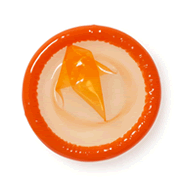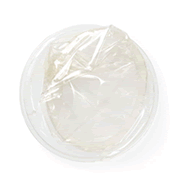Pretty much everyone you know has had HPV
And you've probably had it too
.jpg)
You’ve very likely had human papillomavirus (HPV) at some point in your life, whether or not you realize it. Your best friend probably has too, as has your mom and your brother and the guy you work with and your neighbor and maybe even your grandma. HPV is the most common sexually transmitted infection (STI), and the CDC says that almost every sexually-active person who is not vaccinated against it will have at least one strain of HPV at some point in their lives. Yup, you read that right: almost everyone has already had it or will have it.
Now, you’re probably thinking, Wait a minute! What do you mean, “has had” it? Doesn’t it stay with you forever? And you’re right. HPV is a virus and, as a rule, viruses aren’t curable. But the funny thing about HPV is that many people clear the virus, especially if they get it before the age of 30. That means their immune systems recognize it, attack it, and then they become immune to that strain of HPV. Cool, right?
However, just because you’re immune to one type of HPV, that doesn’t mean you’re immune to the more than 150 other identified types out there. But don’t freak out! Here’s everything you need to know about HPV, the most common STI.
How HPV is Spread
First of all, let’s talk about how this virus spreads. HPV is spread from skin-to-skin contact. Mucous membranes, like the delicate skin of the vagina, vulva, penis, anus, and throat, are more likely to get an HPV infection. Many HPV strains can be spread during oral, anal, or vaginal sex. HPV strains that are spread from skin-to-skin contact with other parts of the body, like the hands or feet, are not really considered an STI.
Unlike a lot of other STIs, HPV is not spread through bodily fluids. That means you can’t get it from ejaculate, pre-ejaculate, vaginal lubrication, spit, or blood. (Though, of course, contact with those fluids often means contact with skin as well.)
The Not Scary Stuff
Now let’s talk about the different types of HPV, because—fun fact—they do very different things to your body. The majority of those 150 strains I mentioned are considered “low-risk” strains because they don’t increase your risk of cancer. Some of the low-risk strains of HPV do, however, are the cause of genital warts. Genital warts are raised, pink or flesh-toned growths that can be as small as a poppy seed or much larger.
However! Most people who have these low-risk strains either don’t show any symptoms at all (meaning they don’t get warts) or if they have outbreaks, they are mild–one to two warts that are so small they don’t even notice them. In general, warts don’t itch. They don’t bleed. They don’t create sores. They’re literally just little bumps around the genital area. But if you do have warts that become a problem or grow to be large, a provider may be able to help treat or remove them.
Also, the strains of HPV that are associated with warts are not associated with cancer. So if you get warts, no need to freak out about that issue, at least.
The Kind of Scary Stuff
Of the about 150 known strains of HPV, some are considered “high-risk,” which means they are associated with cervical, anal, and throat cancer. And two of the high-risk strains—HPV-16 and HPV-18—cause the majority of cancer cases. Because these strains don’t have any visible symptoms, it’s super important to get regular check-ups. People with a cervix can get Pap smears to check for cancerous or precancerous cells on the cervix, with or without an HPV test. And all people can talk to a provider about their risk of HPV infection from anal sex and if they need an anal Pap smear.
Prevention: The HPV Vaccine and Barrier Methods
You may have heard of Gardasil 9, which is the HPV vaccine. It protects against those two main cancer-causing strains—HPV 16 and HPV 18—as well as HPV 31, 33, 45, 52, and 58, all of which can also lead to cancer. It also protects against HPV 6 and HPV 11, which cause 90% of genital warts.
Getting the HPV vaccine before any sexual activity is the best way to prevent HPV infection, but if you’re under 45 and haven’t been vaccinated (or you started the vaccination series but didn’t finish it), talk to your provider about getting the vaccine. While getting the vaccine won’t clear any strains of HPV you’ve already been exposed to, it will protect you from the ones on that list that you haven’t gotten yet.
Finally, barrier methods like condoms, internal condoms, and dental dams do provide some protection against HPV, but it’s not total. That’s because HPV is transferred via skin-to-skin contact, so body parts that aren’t covered up by a barrier method won’t be protected. Still, it’s always a good idea to use a barrier method if STI transmission is a concern for you.
How do you feel about this article?

Heat up your weekends with our best sex tips and so much more.

